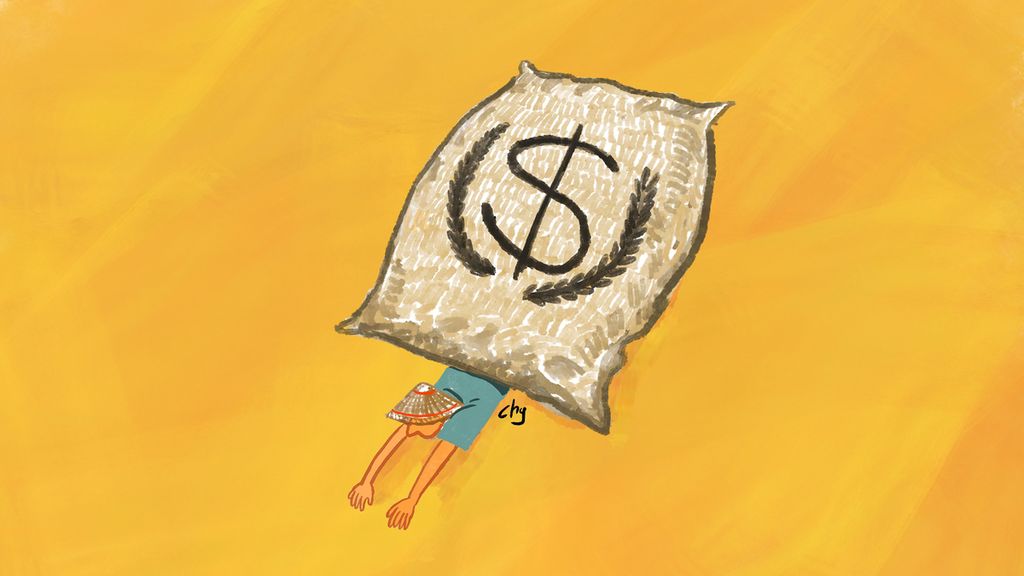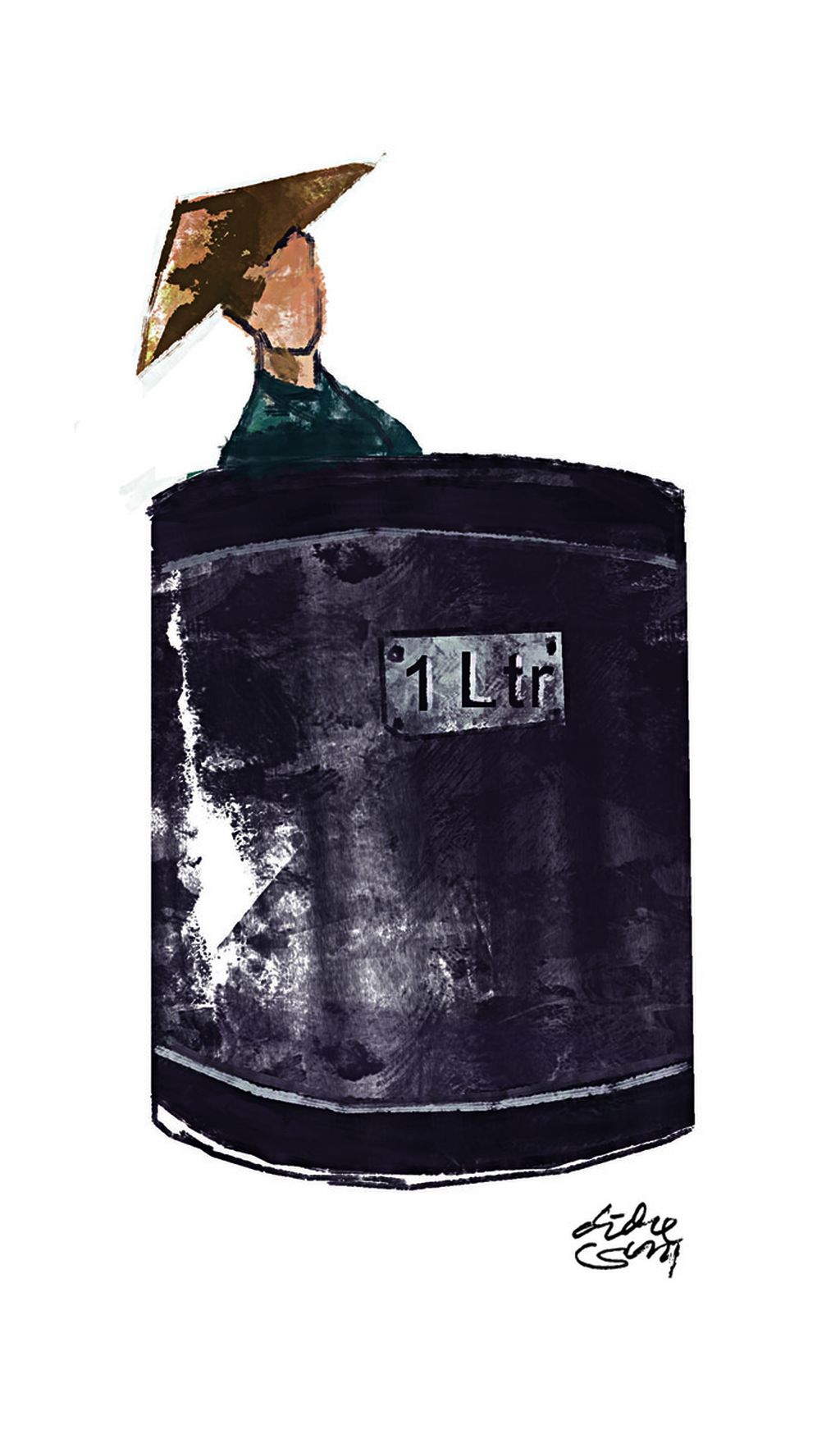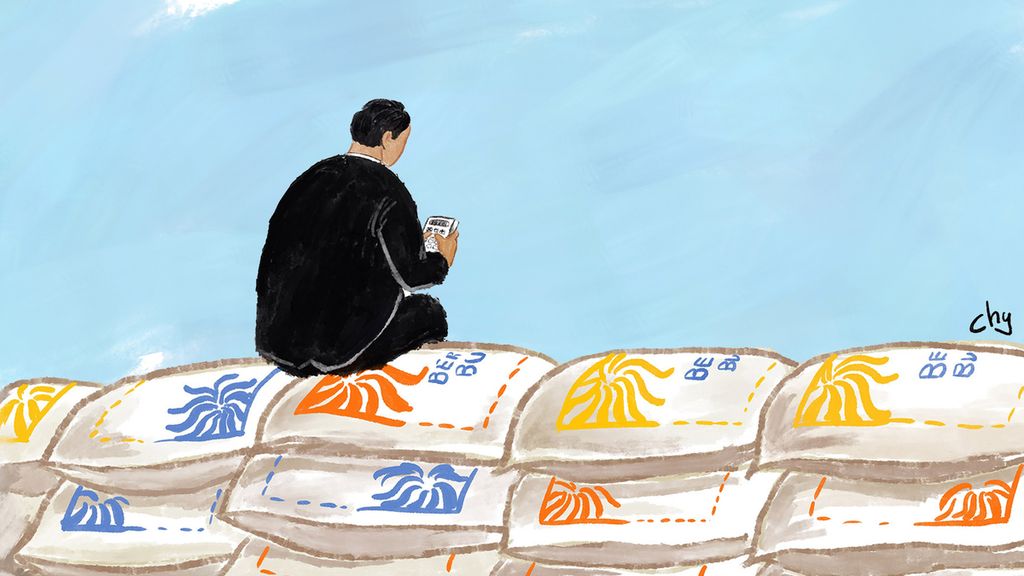Systemic Destruction of Rice Sovereignty
The government must be specific and serious about stopping the systemic destruction of food sovereignty, especially regarding rice.

The ink on the award bestowed on President Joko “Jokowi” Widodo by the International Rice Research Institute (IRRI) on 14 Aug. 2022, to recognize Indonesia for its success in achieving rice self-sufficiency, has not yet dried.
Two months later, the public witnessed an open debate between the food crops director general and the head of the State Logistics Agency (Bulog) at a meeting with House of Representatives (DPR) Commission IV over Bulog's rice stocks. Instead of seeking a solution together, the two officials attacked each other, using arguments to justify themselves.
The director general felt he had done his job properly because the data at Statistics Indonesia (BPS) showed a surplus, while the Bulog head claimed the agency could not absorb rice in the market because it was expensive.
Also read:
> Strange, Food Data is Problematic
> Rice Imports and Government Stocks
Does that mean there is no rice? Why was Bulog's absorption so low during the main harvest season in February-April?
In fact, the data on rice production surplus is an annual, cumulative national figure and not specific to a region or time period. This means that even though the main harvest reached peak production, there will always be an area that records a deficit, because rice self-sufficiency is low in certain regions (Maluku, North Maluku, Papua, East Nusa Tenggara). In contrast, during a famine, the rice production hubs (East Java, Central Java, West Java, South Sulawesi) record a surplus.
In fact, a decision has already ben made to import 500,000 tonnes of rice, and 200,000 tonnes had arrived at Tanjung Priok by the end of December 2022. The remaining 300,000 tonnes will arrive gradually in January-February 2023.
Mode of destruction
Why is the public so opposed to rice imports? First, there is concern that the trade policies of the exporting country will disrupt global prices. Second is the high price volatility in the world market post-Covid 19, because all countries are securing supplies to meet domestic needs. Third, the tradable volume of the rice surplus is not large, so it is prone to distortion.
Then, what is the mode of destruction of rice sovereignty? When the author served as director general of agricultural infrastructure and facilities and director general of rice plantations in 2010-2019, massive rice imports were carried out in various ways.
For example, in blaming BPS data and soaring rice prices on the government’s rice reserves for anticipating disasters, not for the free market, special rice is used a justification, with the support of the mainstream media.

In fact, the government even changed the data on the total area of paddy fields, which was very controversial and highly embarrassing, even though “they claimed” to have used high-resolution satellite imagery. The government also changed the eye estimate method to a sampling analysis framework (KSA), which it claimed to be the best and most accurate.
If there is a dataset that already indicates a surplus, why import rice? Greed for high profits is the trigger.
When the Agriculture Ministry cooperated with the Indonesian Army to boost the Special Efforts (Upsus) and Farmers Grain Absorption Program (Sergap), the agricultural sector’s performance was very encouraging.
Also read:
> World Food and Indonesia 2023
Ironically, there were high-ranking Army officials who openly admitted that there were parties offering large fees to import rice. The price of local rice at that time was much higher than imported rice. Rice was finally imported, despite strong resistance on the ground.
This means that rice imports involve top-down orders, so it is useless to have an open debate because it is already decided bureaucratically and politically. This was when the systemic destruction of rice sovereignty occurred. The government's arguments varied: It had imported rice because the high price of rice would lead to high inflation, the import was for stockpiling to anticipate disaster and not for sale in the market.
Unfortunately, imports are always carried out from October to December, when domestic rice prices are always high due to the peak of the growing season. In fact, February-April is the peak of the main harvest.
Total reform
The next administration must make complete and comprehensive reforms in the rice sector to stop the systemic destruction of rice sovereignty by breaking this chain of massive, systemic and structured rent-seeking. Complete structural, functional and operational reform is needed to break the chain of rent-seekers.
Structurally, the agriculture minister is also the Bulog head, so open debate will never take place between the food crops director general and the head of Bulog.
Bulog and the food crops director general are the main performance indicators (IKU) of the government's rice reserves as well as national rice production, so they will go all out to absorb farmers' grain for the government's rice reserves.
Bulog must be equipped with modern silos so the government's buffer stock is in the form of unhusked rice.
In terms of function, the government must completely overhaul Bulog’s rice processing and procurement mechanism. Bulog must be supported by a modern rice mill so it can buy grain directly from farmers and not from third parties.
Bulog could then produce premium rice, rice bran, bran, and husks, so that maximum added value can be obtained from competitive prices of rice and rice by-products. The rice Bulog buys from third parties, apart from being expensive, is burdened with profit taxes. Bulog must be equipped with modern silos so the government's buffer stock is in the form of unhusked rice, which can be stored for a long time, not husked rice, which has limited shelf life due to loss in quality and volume.

Wilmar's modernized rice production, in collaboration with farmers and supported by a modern RMU with Japanese technology, can buy rice from farmers at market prices, and this is certainly more attractive than what Bulog offers, namely the government purchase price (HPP).
Furthermore, the government must be consistent in assigning the Rastra (rice assistance) to Bulog. Bulog's quality rice and competitive prices will certainly have very high acceptance at the consumer level.
Cheap rice production
The government's instrument to increase the HPP for grain and rice to adjust for inflation must be stopped because it is very detrimental to net consumer farmers and middle to lower class consumers.
There are two arguments. The high rice price opens the door to rent-seekers to import rice that is cheaper and of better quality. The high rice price actually leads to massive and comprehensive impoverishment for small net consumer farmers and the poor, because they also buy rice and so they will have to pay more for their basic needs.
Producer farmers enjoyed the increase in grain prices. The finances of net consumer farmers and consumers were increasingly eroded. The government must go all out (and at all costs) to produce cheap rice, like in Vietnam and Thailand.
Technical efficiency, price/allocative efficiency and economic efficiency are the criteria, so the quality and price of national rice can compete with those of imported rice. Maximum technical efficiency occurs when actual rice production approaches potential production, while cost/allocative efficiency occurs when rice production is able to provide maximum benefits. Economic efficiency is a combination of technical and cost efficiency. These three efficiencies must be achieved for national rice production to be competitive.
Also read:
> Questioning Rice Import Plan
Based on the mapping results for these three efficiencies, the government needs to look closely at the problem of fertilizer subsidies. For example, farmers with less than 1 hectare of land are given free fertilizer or direct fertilizer assistance. Meanwhile, farmers with 1-3 ha of land must buy 60 percent subsidized fertilizer and buy commercial fertilizer for the rest.
Through this approach, the allocation of fertilizer subsidies is fixed and can be more targeted. Furthermore, the government must consolidate paddy field management, as was done in Sukoharjo regency, Central Java, so that technical, cost and economic efficiency can be achieved.
The government must be specific and serious about stopping the systemic destruction of food sovereignty, especially regarding rice. If the rice supply and price continue to be toyed with for short-term gain, some day rice will toy with the government.
That the constant invasion of imported rice destroyed the production system has been proven, and this has also happened with the commodities of soybean and beef. Does the government not feel guilty, and will it repeat the same fatal mistake for the rice commodity? Time will tell.
Gatot Irianto, Former director general of agricultural infrastructure and facilities (2010-2017), former director general of food crops (2017-2019)
This article was translated by Kurniawan Siswo.